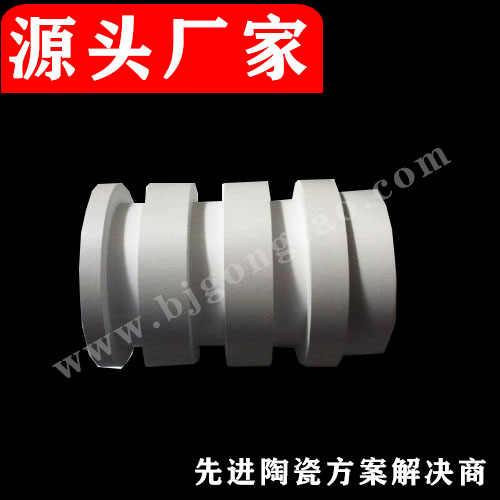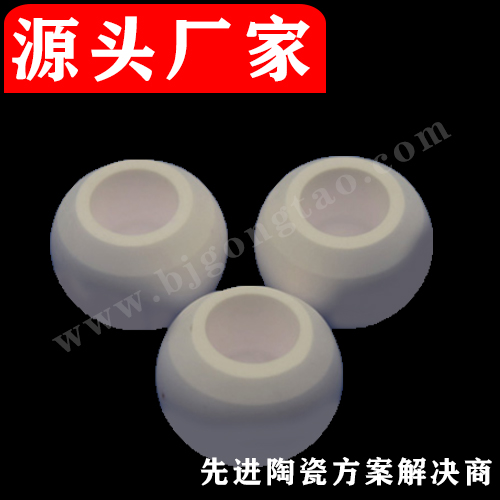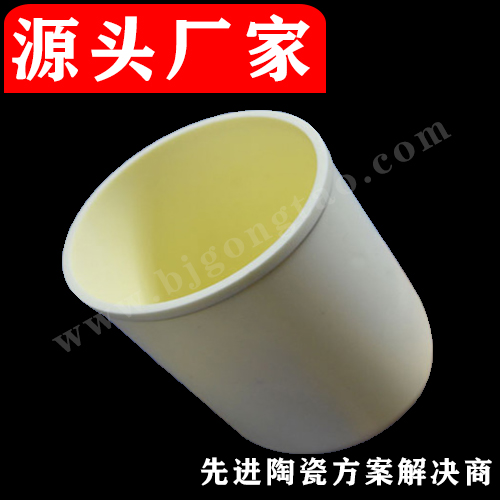News
Contact Us

Suzhou Kaifa New Material Technology Co., Ltd.
Email:heqing@szkfxc.com
Email:sales@szbknm.com
Email:bkxc.bonnie@gmail.com
location:Home » News » Material properties
Application of zirconia tube (zirconia sensor, zirconia analyzer)
edit:Kaifa Popularity:2106 Time:2020/3/25
Zirconia tube applications (zirconia sensors, zirconia analyzers)
It has long been known that certain solid oxides, halides, sulfides, etc. have ionic conductivity, the most famous of which is the stable zirconia found by Nernst in 1989 Ionic conduction at high temperatures. In the period after that, despite various researches on solid electrolytes, which are ionic conductive substances, there has been little progress.
The main components of zirconia oximeter: zirconia oximeter is composed of the main components such as dust-proof device, zirconia tube element (solid electrolyte element), thermocouple, heater, calibration gas conduit, junction box and housing . The entire device adopts a fully enclosed structure to increase the sealing performance of the entire device. The material is made of high temperature and corrosion resistant stainless steel material to improve the service life. 7 W / j $ a5 m3 o- d The dust-proof device consists of a dust cover and a filter, which can prevent dust in the flue gas from entering the inside of the zirconium oxide zirconium tube, protect the zirconium tube elements from pollution and play a buffer gas Kind of effect. (C0 F- T8 X h & V. M J
zirconia tube element is the core component of the oxygen probe, which generates the oxygen concentration potential signal. The zirconia tube element is a ceramic metal oxide, and it must be avoided to avoid severe vibration during use to avoid damage. Zirconium tube components. Thermocouples are used to measure the temperature of the measured gas in the boiler and kiln flue and the constant temperature control of the heater. The role of the heater is to provide the temperature required for the normal operation of the zirconia solid electrolyte element, so that it It works normally in the tested flue gas environment below 600 ℃.
Pure zirconia (ZrO2) has a melting point of 2680 ° C and has three monocrystalline, tetragonal and cubic crystal forms. The phase change begins at a high temperature of 1000 ° C and causes a volume change, which causes the porcelain to crack. Adding a certain amount of stabilizer to form a cubic solid solution can change this property. The product has the characteristics of high temperature resistance, wear resistance, good chemical stability, good ion conductivity and non-conductivity at room temperature. With zirconia-containing ore powder as a raw material, an appropriate amount of stabilizers such as calcium oxide, magnesium oxide, cerium oxide, and yttrium trioxide are added. If a small amount of positively stabilized zirconia particles are introduced into the stabilized zirconia and processed at high temperature, a phase-change toughened zirconia ceramic can be obtained. Its strength and toughness have been improved, but there are microcracks, which are still being improved. Can be used to make crucibles, sintering plates, high-temperature heating elements, oxygen measuring probes, high-temperature electrode materials (for magnetic fluid generators), high-quality grinding bodies, and knives (for smelting high-melting precious metals such as iridium, platinum, palladium, nails, and rhodium. (Never rust, wear-resistant, can be charged)). The use of zirconia (zro2) as a thermocouple protection tube reflects the property that zirconia has good high temperature and air tightness.
Detailed technical parameters
Specifications: ф17.5 / ф21.7 / 500mml
Material: 14.5wt% Y2O3 + 85.5wt% Zro2
crystal structures: hexagonal body temperature, low is tetragonal
Melting point: 2715 deg.] C
temperature range: 0 ~ 2300 ℃
applicable Location: Ingot furnace
Features: High temperature resistance, good abrasion resistance, used in conjunction with traditional ceramic tubes, because ceramic tubes are easily chemically reacted with inert gases at high temperatures and softened, while zirconia tubes do not cause any inert gases The reaction, thereby avoiding the contact between the ceramic tube and the gas, thus more effectively improving the life of the thermocouple.
1. The conductive mechanism of ZrOa zirconium head
ZrO2 is a typical ionic crystal. The bivalent or trivalent cubic symmetrical oxides added to ZrO2, such as CaO, MgO, Y2O3 and other trivalent rare earth oxides, are properly heated and cooled. Under the conditions, ZrO2 can become a fast ion conductor of oxygen when the temperature is above 600 ° C. It is called a solid electrolyte. This ceramic material is highly sensitive to oxygen and has very good selectivity. Oxygen probes (also called oxygen sensors) made with it are widely used in industrial furnaces and environmental protection. ZrO2 solid electrolyte is an ionic conductor, which conducts electricity through the oxygen ion vacancies in the crystal lattice. The addition of zirconium valence metal oxide generates a large number of oxygen ion vacancies in the ZrO2 crystal lattice (see Figure 1 ). Every time two yttrium ions are added, an oxygen ion vacancy is established. The defect concentration of ZrO2 is mainly determined by the amount of additives added, and has nothing to do with temperature and ambient atmosphere. ZrO2‘s ionic conductivity is achieved by the migration of oxygen ions in ZrO2.
In this way, a certain electromotive force is generated between the two electrodes. The zirconia electrolyte, the Pt electrode, and the gas with different oxygen concentrations on both sides constitute an oxygen probe, a so-called zirconia concentration difference battery. The motive force generated by this battery electromotive force is the chemical potential difference of oxygen on the electrodes on both sides.
It has long been known that certain solid oxides, halides, sulfides, etc. have ionic conductivity, the most famous of which is the stable zirconia found by Nernst in 1989 Ionic conduction at high temperatures. In the period after that, despite various researches on solid electrolytes, which are ionic conductive substances, there has been little progress.
The main components of zirconia oximeter: zirconia oximeter is composed of the main components such as dust-proof device, zirconia tube element (solid electrolyte element), thermocouple, heater, calibration gas conduit, junction box and housing . The entire device adopts a fully enclosed structure to increase the sealing performance of the entire device. The material is made of high temperature and corrosion resistant stainless steel material to improve the service life. 7 W / j $ a5 m3 o- d The dust-proof device consists of a dust cover and a filter, which can prevent dust in the flue gas from entering the inside of the zirconium oxide zirconium tube, protect the zirconium tube elements from pollution and play a buffer gas Kind of effect. (C0 F- T8 X h & V. M J
zirconia tube element is the core component of the oxygen probe, which generates the oxygen concentration potential signal. The zirconia tube element is a ceramic metal oxide, and it must be avoided to avoid severe vibration during use to avoid damage. Zirconium tube components. Thermocouples are used to measure the temperature of the measured gas in the boiler and kiln flue and the constant temperature control of the heater. The role of the heater is to provide the temperature required for the normal operation of the zirconia solid electrolyte element, so that it It works normally in the tested flue gas environment below 600 ℃.
Pure zirconia (ZrO2) has a melting point of 2680 ° C and has three monocrystalline, tetragonal and cubic crystal forms. The phase change begins at a high temperature of 1000 ° C and causes a volume change, which causes the porcelain to crack. Adding a certain amount of stabilizer to form a cubic solid solution can change this property. The product has the characteristics of high temperature resistance, wear resistance, good chemical stability, good ion conductivity and non-conductivity at room temperature. With zirconia-containing ore powder as a raw material, an appropriate amount of stabilizers such as calcium oxide, magnesium oxide, cerium oxide, and yttrium trioxide are added. If a small amount of positively stabilized zirconia particles are introduced into the stabilized zirconia and processed at high temperature, a phase-change toughened zirconia ceramic can be obtained. Its strength and toughness have been improved, but there are microcracks, which are still being improved. Can be used to make crucibles, sintering plates, high-temperature heating elements, oxygen measuring probes, high-temperature electrode materials (for magnetic fluid generators), high-quality grinding bodies, and knives (for smelting high-melting precious metals such as iridium, platinum, palladium, nails, and rhodium. (Never rust, wear-resistant, can be charged)). The use of zirconia (zro2) as a thermocouple protection tube reflects the property that zirconia has good high temperature and air tightness.
Detailed technical parameters
Specifications: ф17.5 / ф21.7 / 500mml
Material: 14.5wt% Y2O3 + 85.5wt% Zro2
crystal structures: hexagonal body temperature, low is tetragonal
Melting point: 2715 deg.] C
temperature range: 0 ~ 2300 ℃
applicable Location: Ingot furnace
Features: High temperature resistance, good abrasion resistance, used in conjunction with traditional ceramic tubes, because ceramic tubes are easily chemically reacted with inert gases at high temperatures and softened, while zirconia tubes do not cause any inert gases The reaction, thereby avoiding the contact between the ceramic tube and the gas, thus more effectively improving the life of the thermocouple.
Oxygen sensor oxygen measurement principle
1. The conductive mechanism of ZrOa zirconium head
ZrO2 is a typical ionic crystal. The bivalent or trivalent cubic symmetrical oxides added to ZrO2, such as CaO, MgO, Y2O3 and other trivalent rare earth oxides, are properly heated and cooled. Under the conditions, ZrO2 can become a fast ion conductor of oxygen when the temperature is above 600 ° C. It is called a solid electrolyte. This ceramic material is highly sensitive to oxygen and has very good selectivity. Oxygen probes (also called oxygen sensors) made with it are widely used in industrial furnaces and environmental protection. ZrO2 solid electrolyte is an ionic conductor, which conducts electricity through the oxygen ion vacancies in the crystal lattice. The addition of zirconium valence metal oxide generates a large number of oxygen ion vacancies in the ZrO2 crystal lattice (see Figure 1 ). Every time two yttrium ions are added, an oxygen ion vacancy is established. The defect concentration of ZrO2 is mainly determined by the amount of additives added, and has nothing to do with temperature and ambient atmosphere. ZrO2‘s ionic conductivity is achieved by the migration of oxygen ions in ZrO2.
2. Oxygen measuring principle of oxygen sensor:
Porous platinum (Pt) electrodes are sintered on both sides of the zirconia electrolyte (ZrO2 tube). At a certain temperature, when the oxygen concentration on the two sides of the electrolyte is different, the oxygen molecules on the high concentration side (II side Pref) are adsorbed on the platinum. The electrode is combined with electrons (4e) to form an oxygen ion O2-, which makes the electrode positively charged. The O2- ion migrates to the Pt electrode on the low oxygen concentration side (I side Po2) through the oxygen ion vacancy in the electrolyte, and releases the electron, which is converted. The formation of oxygen molecules makes this electrode negatively charged.In this way, a certain electromotive force is generated between the two electrodes. The zirconia electrolyte, the Pt electrode, and the gas with different oxygen concentrations on both sides constitute an oxygen probe, a so-called zirconia concentration difference battery. The motive force generated by this battery electromotive force is the chemical potential difference of oxygen on the electrodes on both sides.
Next:
The main applica...
Previous:
Production and a...





